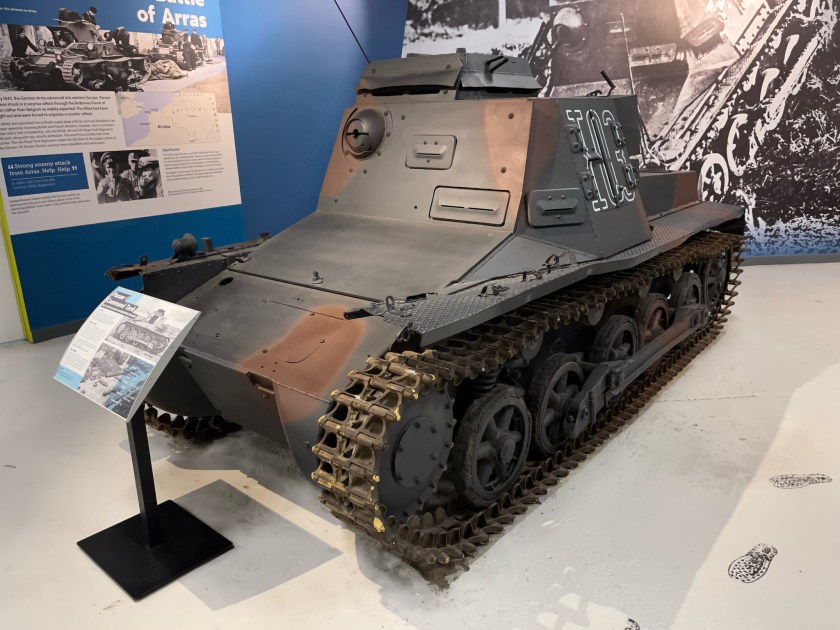The Sd.Kfz. 265 Panzerbefehlswagen (light armoured command vehicle) was a German Army’s first purpose-designed armoured command vehicle; a type of armoured fighting vehicle designed to provide a tank unit commander with mobility and communications on the battlefield. A development of the Army’s first mass-produced tank, the Panzer I Ausf. A, the Sd. Kfz. 265 saw considerable action during the early years of the war, serving in Panzer units through 1942 and with other formations until late in the war.
This rare Sd.Kfz. 265 Panzerbefehlswagen is on display at Bovington.
The Sd. Kfz. 265 was based on the Panzer I Ausf. A chassis, but it had its turret removed and replaced with a superstructure that housed additional radios and other communications equipment. The superstructure was located at the rear of the vehicle, and it was designed to provide the commander with a good view of the battlefield. The Sd. Kfz. 265 was also equipped with a single 7.92mm machine gun, which was mounted in the hull.
The Sd. Kfz. 265 was crewed by three men: the commander, the driver, and the radio operator. The commander was responsible for directing the unit’s movements and for communicating with other units. The driver was responsible for driving the vehicle, and the radio operator was responsible for operating the vehicle’s communications equipment.
The Sd. Kfz. 265 was a relatively simple and inexpensive vehicle to produce, and it was well-suited for its intended role as a command tank. It was reliable and easy to maintain, and it had good mobility and range. However, it was lightly armoured and lightly armed, and it was not suitable for combat.
The Panzer I Command Tank was first used in combat during the Spanish Civil War, and it saw extensive use during the early years of World War II. It was eventually replaced by more capable command tanks, such as the Panzer III Command Tank, but it remained in service until the end of the war.
Design of the Panzer I began in 1932 and mass production began in 1934. Intended only as a training tank to introduce the concept of armoured warfare to the German Army, the Panzer I saw combat in Spain during the Spanish Civil War, in Poland, France, the Soviet Union and North Africa during the Second World War, and in China during the Second Sino-Japanese War. Experiences with the Panzer I during the Spanish Civil War helped shape the German Panzerwaffe’s invasion of Poland in 1939 and France in 1940.
I didn’t know until a few years ago that the German tanks in 1940 were painted grey and brown, I had always thought they were just grey. I personally blame Matchbox for this.
It was only after Blitzkrieg was released back in 2010 by Battlefront that I noticed the grey and brown camouflage scheme.
As recently as ten years ago the overwhelming consensus regarding early war German AFV paint schemes was that they were all painted in uniform overall panzer grey (Dunkelgrau – RAL 7021 – formerly RAL 46). However, in 2002 Tom Jentz and Hilary Doyle published an article based on primary sources stating all German vehicles at the beginning of World War II were painted in a two tone camouflage scheme of panzer grey with one third of the vehicle painted in a disruptive pattern of dark brown (Dunkelbraun – RAL 7017 – formerly RAL 45). The order to move to an overall panzer grey scheme was not signed until the end of July 1940.


